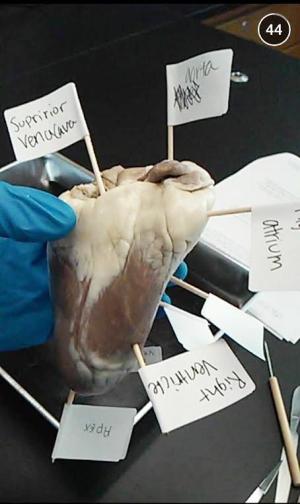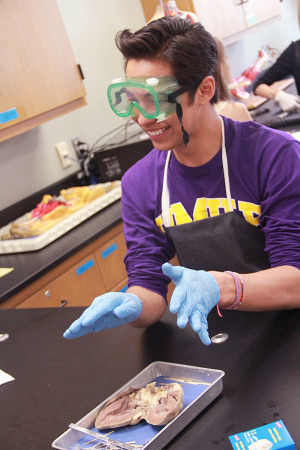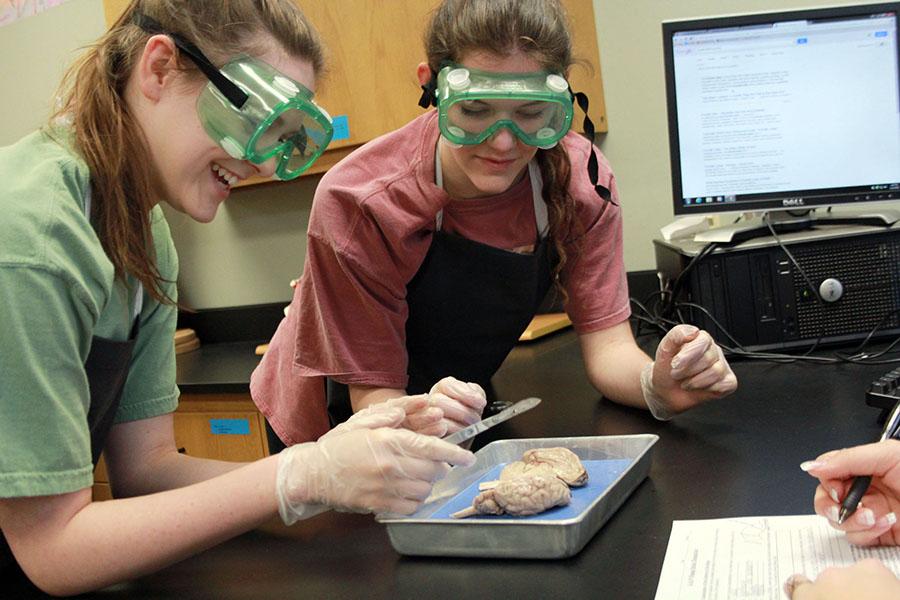Slice of life
Two classes cover the body and how it works through dissections and experiments.
Seniors Caitlin Meuth and Shelby Hooper dissect a sheep’s brain in Samuel Rodriguez’s eighth period Anatomy and Physiology class.
April 6, 2015
Sheep brains, rats, cow hearts, cats, even eyeballs are all things that can be found, and dissected, in Principles of Biomedical Science and Anatomy and Physiology.
“Most of my students come in intimidated because it’s AP anatomy and they have their guard up,” Anatomy and Physiology teacher Samuel Rodriguez said. “You need a relationship first, break the barrier between teacher and student.”

Anatomy and Physiology covers all the body systems, like the skeletal or muscular system as well as things like esthiology, the study of the skin.
“We investigate the anatomy of our bodies and how it works,” Rodriguez said. “It is a challenging class, but at the same time it’s fun. You will get a lot out of it especially if you are going into the medical field.”
In order to fully understand all the body systems, this class dissects the bodies and organs of animals. In the first two weeks of class they dissected a rat and for their final they will perform a full autopsy of a cat, one of them being pregnant.
“Dissecting is really fun, because it’s cool to see what’s inside and how it works,” junior Gage Bruner said. “It’s fun because I actually got to cut it open and stuff.”

Philip Lecaros finishes cutting the sheep heart in to halves along the middle.
Principles of Biomedical Science also does interesting experiments; beginning with the fictional death of Anna Garcia they explored her medical history and treatments. The class also experiments with blood splatters and dissected a cow heart.
“It’s very interesting to learn about Anna and her death and all the diseases and heart problems and stuff,” sophomore Gabriella Cisneros “Another cool thing was the blood splatter experiment but it was very messy.”
Principles of Biomedical Science, somewhat similar to Anatomy, looks at all different kinds of human physiology biology medicine, investigated it with technology, and teaching what most teenagers don’t often get the opportunity to learn.
“Whoever is in this class should be interested and willing to work hard, it’s not going to be one of your blow off classes,” Principles of Biomedical Science teacher Danna Nelson said. “If you work really hard in this class then you will get a lot of meaningful experiences and a lot of chances to use equipment and technology that most high school students don’t get to use.”



